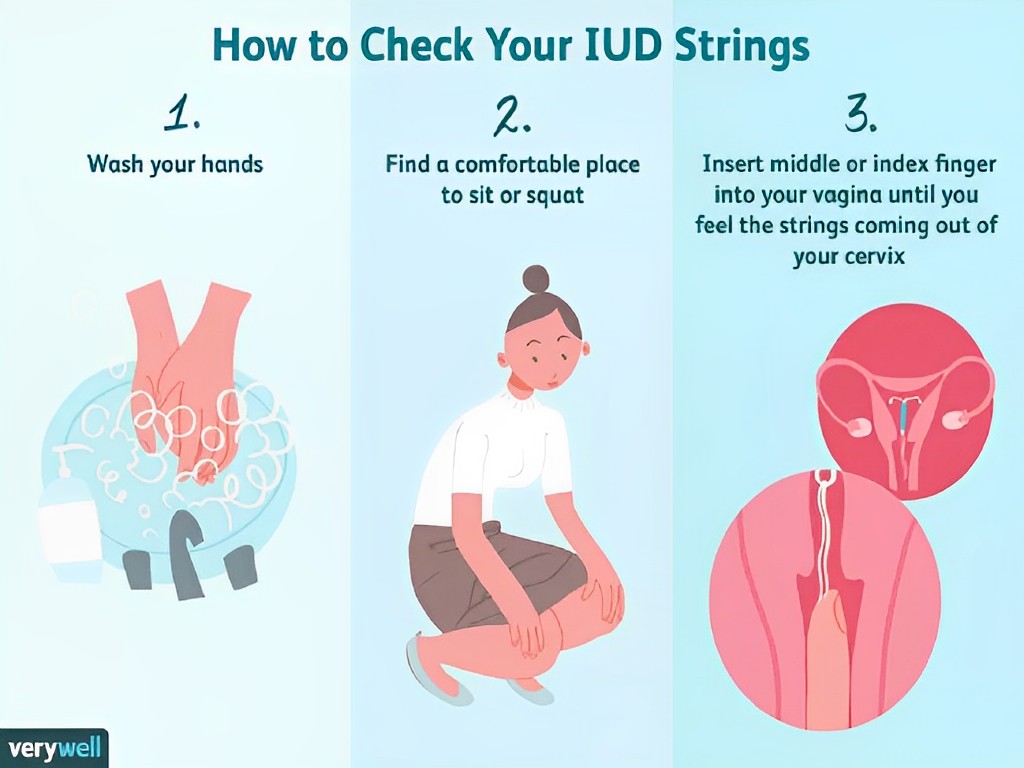Random Bleeding With Mirena After 3 Years

Are you experiencing unexpected and random bleeding despite having the Mirena intrauterine device (IUD) for over three years? If so, you’re not alone. We understand that dealing with spontaneous bleeding can be concerning and disruptive to your daily life.
So, why are you experiencing random bleeding with Mirena after 3 years of use?
Random bleeding with Mirena after three years can have various causes, including hormonal fluctuations, IUD displacement, infection, or underlying conditions. Consult a healthcare provider for evaluation and potential treatments, such as hormone therapy, antibiotics, repositioning or removal of the IUD.
In this informative discussion, we will explore the potential reasons behind this unexpected bleeding after three years with Merina. Also, we will provide you with advice to help you navigate this situation.
Is Random Bleeding After Three Years of Having Mirena Normal?
Random bleeding or spotting can occur with Mirena (levonorgestrel-releasing intrauterine system or IUS), especially during the first few months after insertion. However, after three years of using Mirena, it is rare to experience random bleeding.
If you are experiencing unexpected bleeding or spotting after three years of using Mirena, it is advisable to consult with your healthcare provider. While Mirena is known to reduce or eliminate menstrual bleeding in many users, individual experiences may vary.
Your healthcare provider will be able to evaluate your specific situation, examine if necessary, and provide appropriate guidance or recommendations.
In some cases, random bleeding after an extended period of using Mirena could indicate a potential issue or complication. The issues could be infection, hormonal imbalance, or the need for Mirena removal and replacement. Therefore, seeking medical advice is essential to ensure your well-being and address any concerns.
What Could Be Causing Random Bleeding With Mirena After Three Years?
Random bleeding with Mirena after three years can have several potential causes. While Mirena is known to cause changes in menstrual bleeding patterns, including irregular bleeding or spotting, it is less common for these symptoms to occur after the initial adjustment period.
However, after several years of using Mirena, some women may still experience random bleeding. It’s essential to understand the possible underlying factors and take appropriate steps if you encounter this issue.
- Hormonal fluctuations
- Hormonal IUD effectiveness
- Expulsion or displacement of the IUD
- Infection or other underlying conditions
Hormonal Fluctuations
Mirena releases levonorgestrel, which can help prevent pregnancy and affect the uterine lining. Hormonal fluctuations can sometimes cause random bleeding, especially if there are changes in hormone levels over time. While most women experience more predictable bleeding patterns with Mirena, individual responses can vary.
Hormonal IUD Effectiveness
Although Mirena is a highly effective contraceptive, there is a slight chance of pregnancy even with correct usage. If you experience random bleeding after three years, it’s essential to rule out pregnancy as a possible cause. Consult with your healthcare provider to discuss the need for a pregnancy test.
Expulsion or Displacement of The IUD
Mirena can become partially or entirely expelled from the uterus or shift its position over time. If the IUD (Intrauterine contraceptive device) moves out of place, it can lead to changes in bleeding patterns, including random bleeding. Check for the IUD strings, which should hang down from the cervix.

Source: verywellhealth
If you cannot feel the strings or suspect the IUD might have moved, contact your healthcare provider for an examination.
Infection or Other Underlying Conditions
Although uncommon, infections in the uterus or cervix can cause abnormal bleeding. Other conditions, such as endometrial polyps or hormonal imbalances, could also contribute to random bleeding.
If the bleeding is persistent, unusually heavy, or accompanied by other concerning symptoms, it is essential to consult with your healthcare provider for a proper evaluation and diagnosis.
Duration of Random Bleeding
While occasional spotting or irregular bleeding can be expected in the first few months after getting the Mirena IUD, random bleeding after three years is less typical. A healthcare provider should evaluate any persistent, prolonged, or heavy bleeding.
Other Symptoms To Watch For
In addition to random bleeding, individuals should be aware of other symptoms that may accompany it. These could include pelvic pain, fever, unusual vaginal discharge, or other signs of infection. It is essential to discuss these symptoms with a healthcare provider.
What Should You Do For Random Bleeding With Mirena?
The appropriate treatment for random bleeding with Mirena after three years will depend on the underlying cause identified by your healthcare provider. Here are some potential options:
- Hormone therapy: If hormonal fluctuations contribute to the random bleeding, your healthcare provider may recommend hormone therapy to help regulate your menstrual cycles. This could involve additional hormonal medications or adjustments to your current Mirena dosage.
- Antibiotics: If an infection is suspected to cause random bleeding, your healthcare provider may prescribe antibiotics to treat the infection and resolve the symptoms.
- IUD repositioning or replacement: If the Mirena IUD has become displaced or expelled, your healthcare provider may attempt to reposition it or recommend replacing it with a new IUD to restore proper functioning and reduce the occurrence of random bleeding.
- Removal of the Mirena IUD: In some cases, if the random bleeding persists despite other interventions, your healthcare provider may suggest removing the Mirena IUD. This can help determine if the IUD itself is causing the issue or if another underlying cause may contribute to the bleeding.
- Alternative birth control options: If the Mirena IUD is removed due to persistent random bleeding and you require ongoing contraception, your healthcare provider can discuss alternative birth control methods. Various options are available, such as other hormonal IUDs, birth control pills, patches, injections, or non-hormonal methods like condoms or copper IUDs.
Remember, every individual’s situation is unique, and your healthcare provider will determine the appropriate treatment plan based on a thorough evaluation. It’s essential to maintain open communication with your healthcare provider, ask any questions, and adhere to their recommended course of action.
Can The Mirena Be Removed If You Experience Random Bleeding After Three Years?
Yes, the Mirena IUD can be removed if you are experiencing random bleeding after three years. If you’re having persistent or concerning bleeding episodes, it’s essential to consult with your healthcare provider.
They will evaluate your situation and determine the most appropriate action, including removing the Mirena IUD.
The removal process is typically straightforward and can be performed during a routine office visit. Your healthcare provider will use specialized instruments to locate and grasp the strings attached to the IUD.
They will then gently pull on the strings to remove the device from the uterus. Some women may experience mild discomfort or cramping during the removal process, but it is generally well-tolerated.
After the Mirena IUD is removed, your menstrual bleeding patterns should gradually return to your normal baseline. If you were using Mirena for contraception and wish to continue with another form of birth control, your healthcare provider can discuss alternative options that may better suit your needs.
It’s important to note that removing the Mirena IUD does not guarantee an immediate resolution of the bleeding issue. It may take some time for your hormonal balance to regulate and for your menstrual cycle to normalize after removal.
If the bleeding persists or worsens after removal, or if you have any other concerns, make sure to follow up with your healthcare provider for further evaluation and guidance.
Frequently Asked Questions (FAQs)
Can The Mirena Stop Working After 3 Years?
Yes, the Mirena intrauterine device (IUD) is designed to be effective for up to 5 years, but there is a small possibility that it may become less effective after 3 years. It is recommended to have it replaced at the end of its intended lifespan to ensure continued contraception.
Does Mirena Lose Effectiveness Over Time?
Actually, Mirena retains effectiveness over time. According to the recent announcement by the FDA, Mirena IUD is 99% effective at preventing pregnancy for up to 8 years.
Is Irregular Bleeding With Mirena After Three Years Normal?
Yes, irregular bleeding is a common occurrence with Mirena, with many women experiencing spotting or heavier bleeding in the first few months. Also, others may have their periods cease entirely without complications.
Conclusion
In conclusion, random bleeding with Mirena after three years can have several potential causes, including hormonal fluctuations, IUD displacement, infection, or underlying conditions.
It is essential to consult with a healthcare provider for a proper diagnosis and treatment. If the problem still persists, removing the Mirena IUD is an option for further evaluation. Follow up with a healthcare provider for further guidance.





